Abstract
The Special Bacteriology Section of the Center for Disease Control has received 38 cultures of a halophilic bacterium which apparently unnamed. On the basis of the minimal characteristics of Vibrio species proposed by Hugh and Sakazaki, this bacterium belongs to the genus Vibrio. The unnamed species can be differentiated from Vibro parahaemolyticus by a lower tolerance for sodium chloride (NaC1) and the fermentation of lactose. The failure to ferment sucrose is an additional characteristic which differentiates these organisms from V. alginolyticus. Of 33 unnamed species strains tested, all were sensitive to penicillin, ampicillin, carbenicillin, cephalothin, chlorapmphenicol, gentamicin, tetracycline, rifampin, nitrofurantoin, and sulfisoxazole by agar diffusion and agar dilution tests. The sources of isolation of the cultures of the unnamed species suggest that it is a clinically important organism. Twenty strains were isolated remaining cultures were isolated from localized infections of the extremities. In contrast, only 2 of 60 cultures of V. parahaemolyticus and V. alginolyticus received in our laboratory as human isolates from extra-intestinal sources were isolated from blood.
Full text
PDF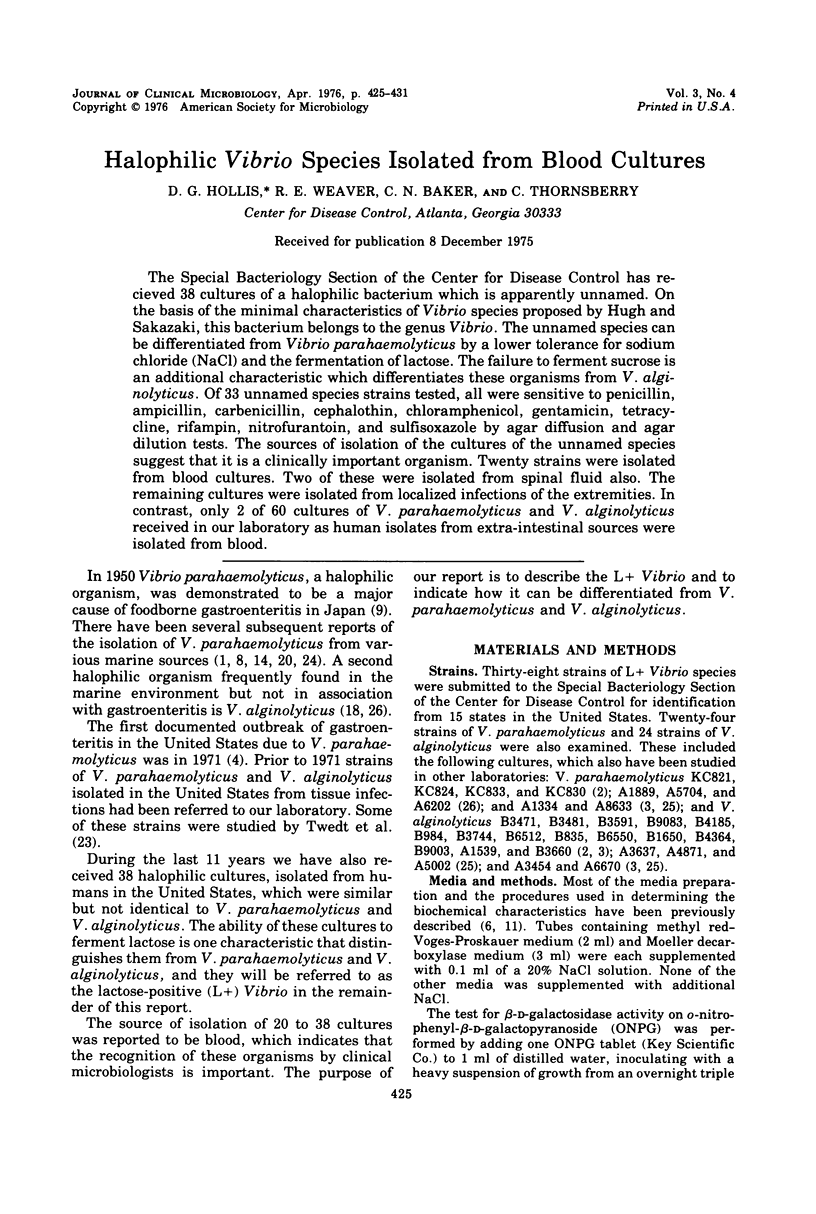
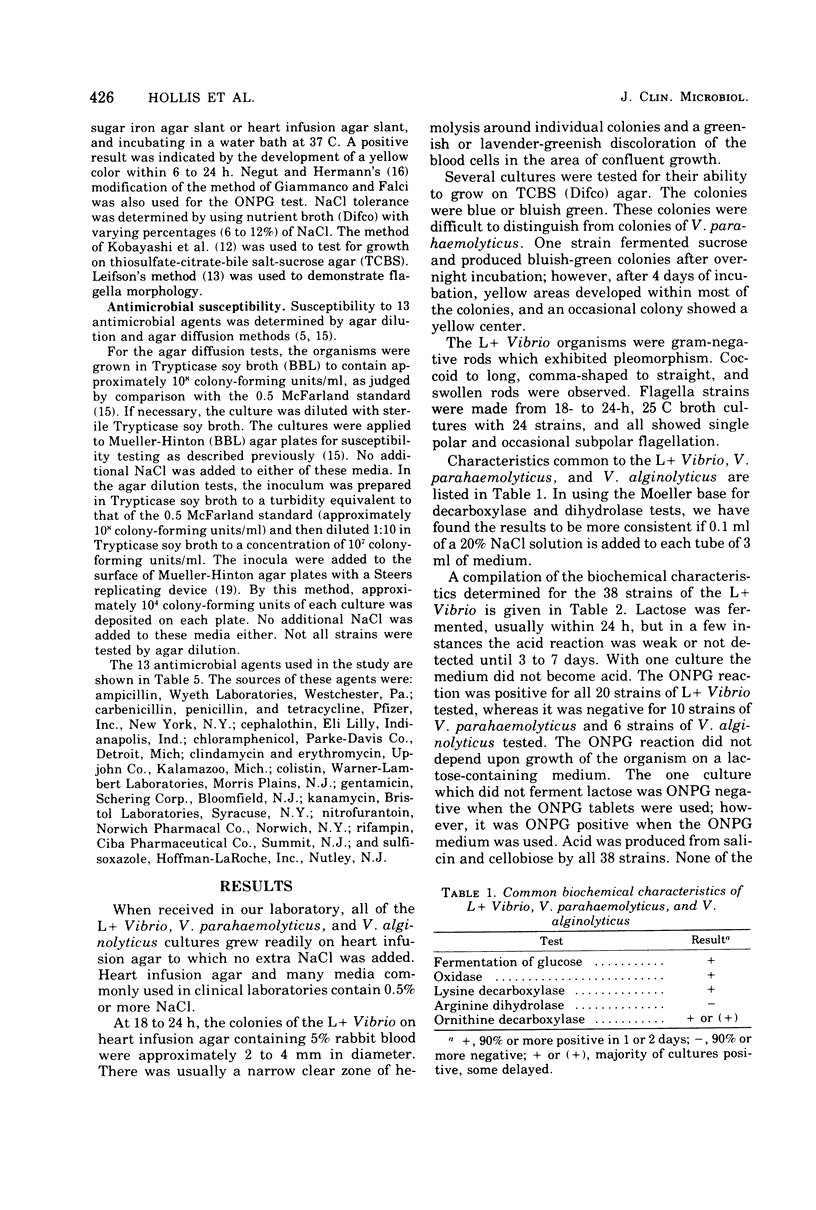
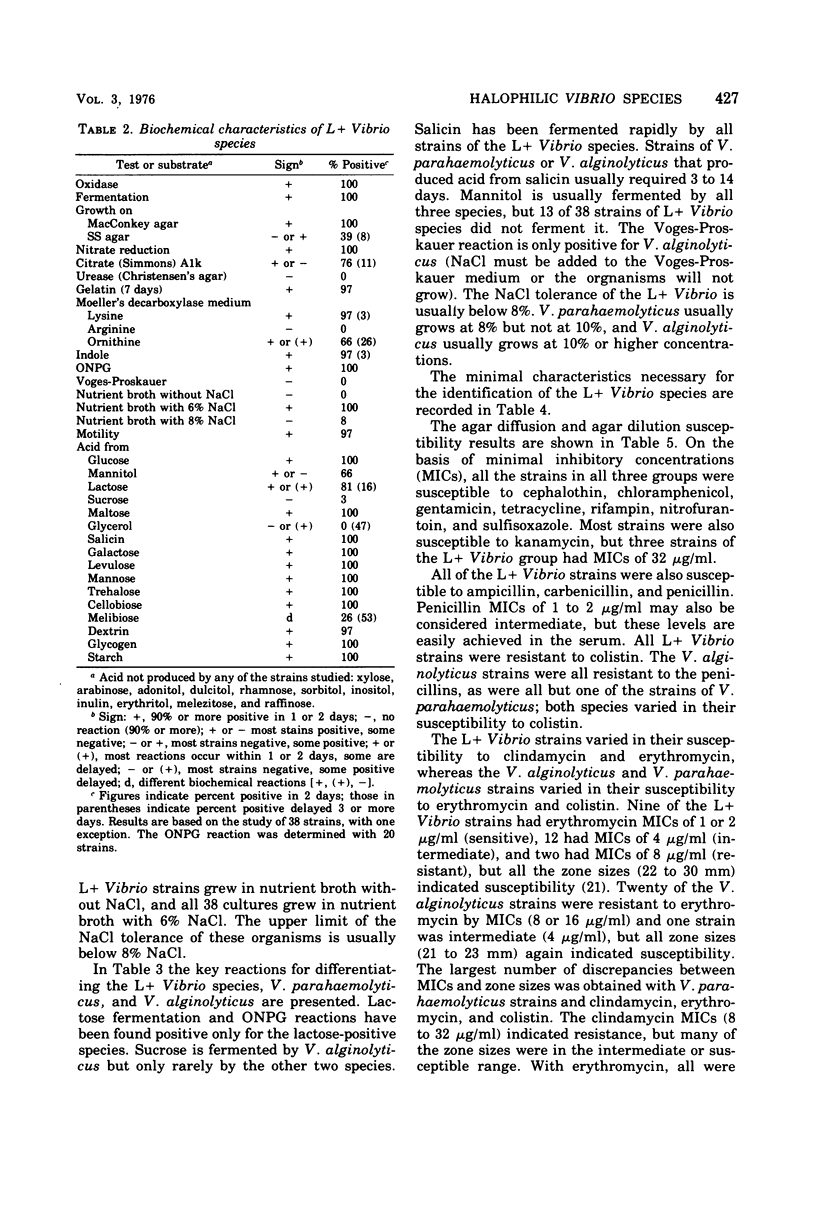
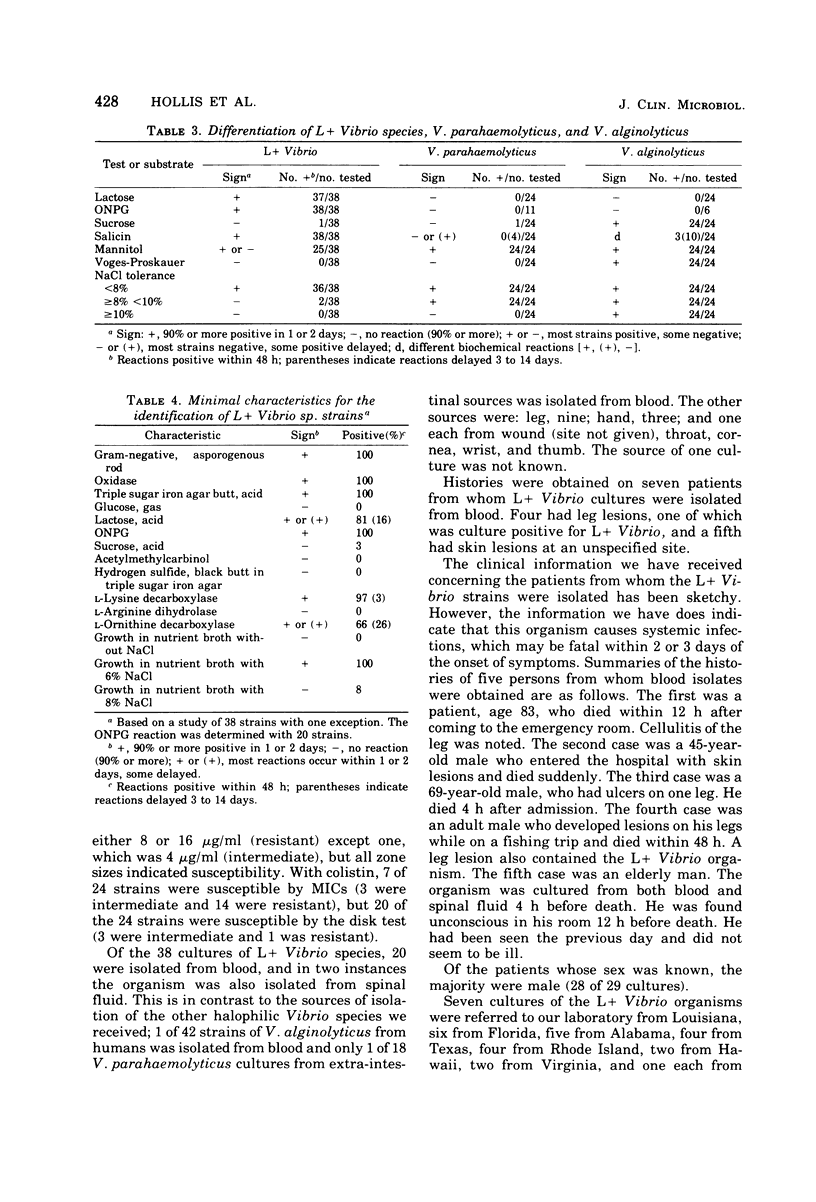
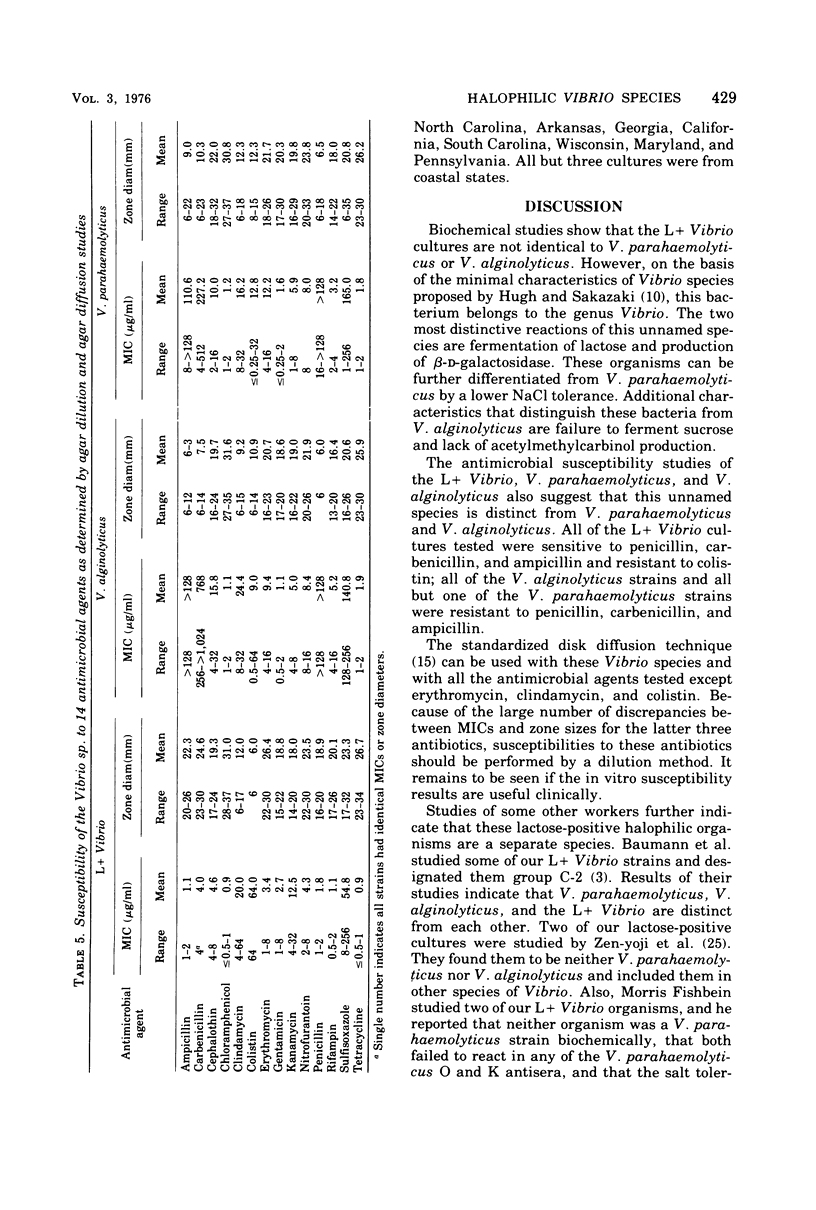
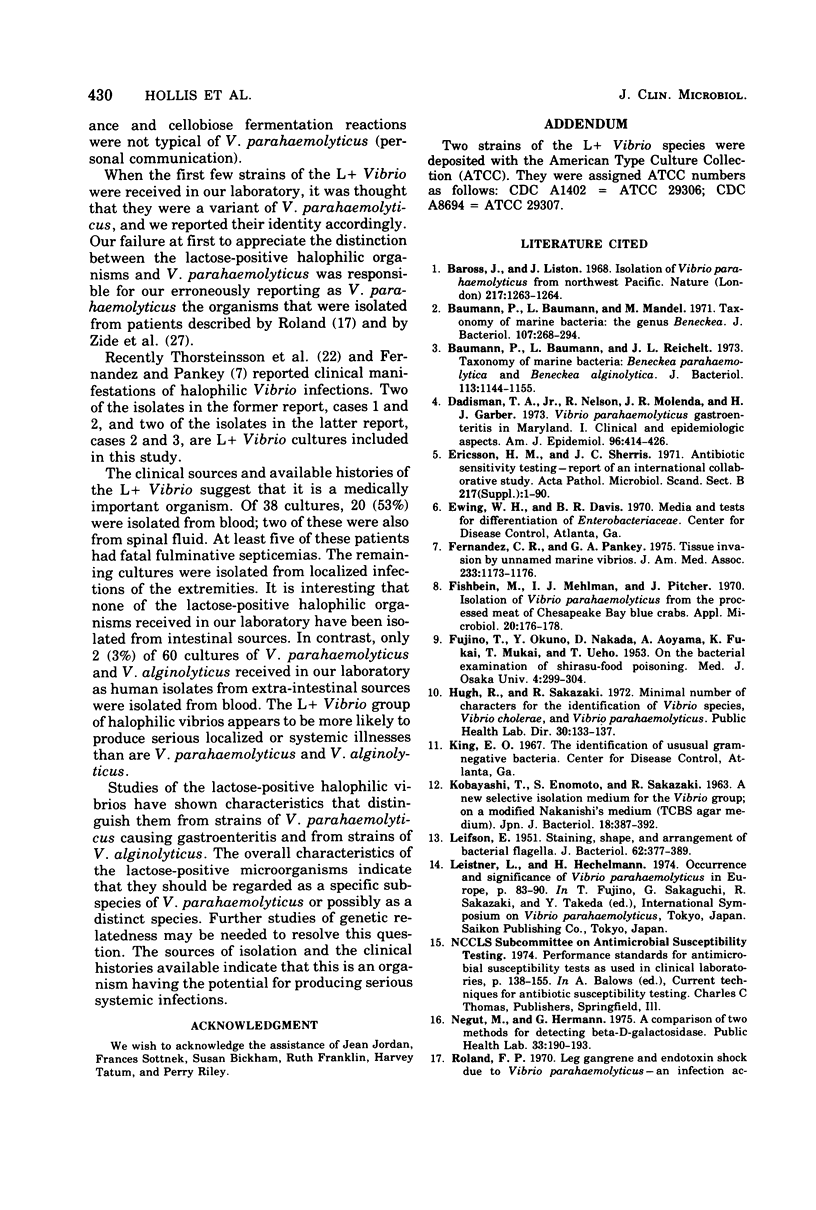
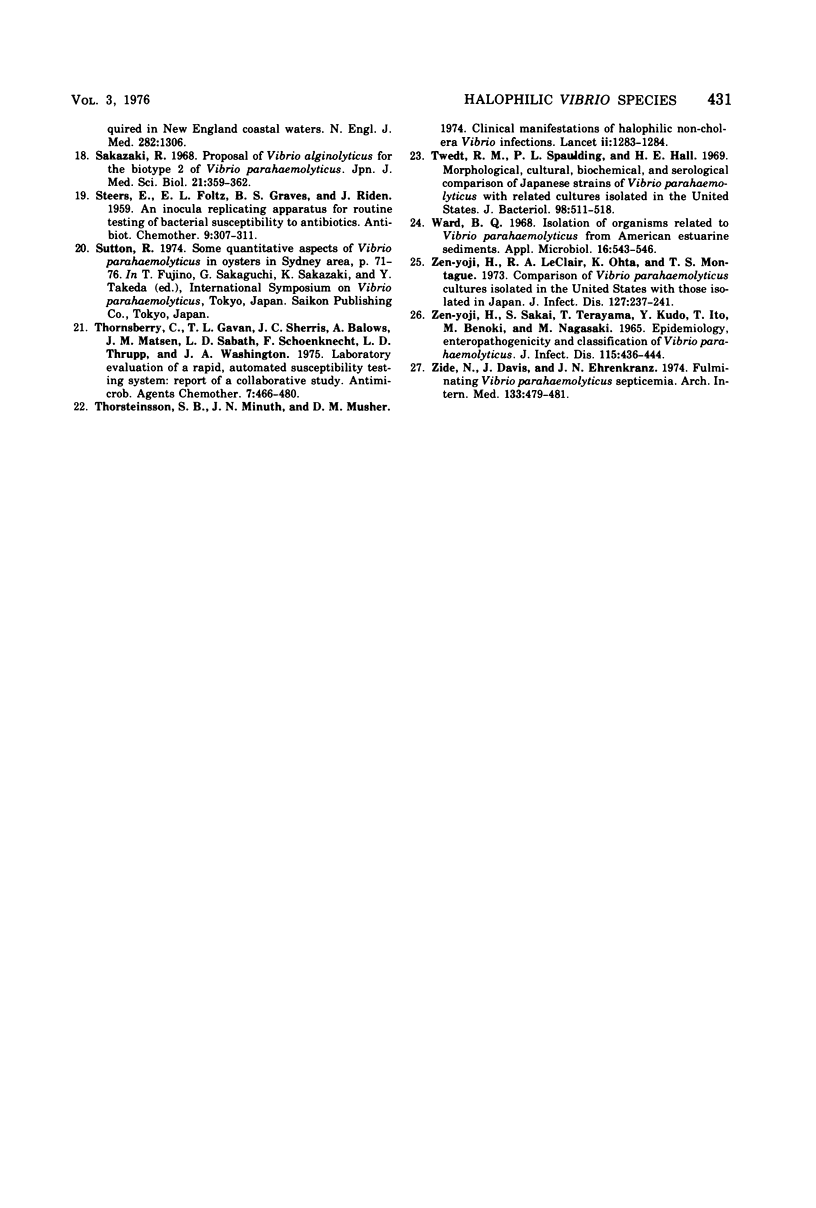
Selected References
These references are in PubMed. This may not be the complete list of references from this article.
- Baross J., Liston J. Isolation of vibrio parahaemolyticus from the Northwest Pacific. Nature. 1968 Mar 30;217(5135):1263–1264. doi: 10.1038/2171263a0. [DOI] [PubMed] [Google Scholar]
- Baumann P., Baumann L., Mandel M. Taxonomy of marine bacteria: the genus Beneckea. J Bacteriol. 1971 Jul;107(1):268–294. doi: 10.1128/jb.107.1.268-294.1971. [DOI] [PMC free article] [PubMed] [Google Scholar]
- Baumann P., Baumann L., Reichelt J. L. Taxonomy of marine bacteria: Beneckea parahaemolytica and Beneckea alginolytica. J Bacteriol. 1973 Mar;113(3):1144–1155. doi: 10.1128/jb.113.3.1144-1155.1973. [DOI] [PMC free article] [PubMed] [Google Scholar]
- Dadisman T. A., Jr, Nelson R., Molenda J. R., Garber H. J. Vibrio parahaemolyticus gastroenteritis in Maryland. I. Clinical and epidemiologic aspects. Am J Epidemiol. 1972 Dec;96(6):414–426. doi: 10.1093/oxfordjournals.aje.a121474. [DOI] [PubMed] [Google Scholar]
- Fernandez C. R., Pankey G. A. Tissue invasion by unnamed marine vibrios. JAMA. 1975 Sep 15;233(11):1173–1176. [PubMed] [Google Scholar]
- Fishbein M., Mehlman I. J., Pitcher J. Isolation of Vibrio parahaemolyticus from the processed meat of Chesapeake Bay blue crabs. Appl Microbiol. 1970 Aug;20(2):176–178. doi: 10.1128/am.20.2.176-178.1970. [DOI] [PMC free article] [PubMed] [Google Scholar]
- KOBAYASHI T., ENOMOTO S., SAKAZAKI R., KUWAHARA S. [A NEW SELECTIVE ISOLATION MEDIUM FOR THE VIBRIO GROUP; ON A MODIFIED NAKANISHI'S MEDIUM (TCBS AGAR MEDIUM)]. Nihon Saikingaku Zasshi. 1963 Nov;18:387–392. doi: 10.3412/jsb.18.387. [DOI] [PubMed] [Google Scholar]
- LEIFSON E. Staining, shape and arrangement of bacterial flagella. J Bacteriol. 1951 Oct;62(4):377–389. doi: 10.1128/jb.62.4.377-389.1951. [DOI] [PMC free article] [PubMed] [Google Scholar]
- Sakazaki R. Proposal of Vibrio alginolyticus for the biotype 2 of Vibrio parahaemolyticus. Jpn J Med Sci Biol. 1968 Oct;21(5):359–362. doi: 10.7883/yoken1952.21.359. [DOI] [PubMed] [Google Scholar]
- Thornsberry C., Gavan T. L., Sherris J. C., Balows A., Matsen J. M., Sabath L. D., Schoenknecht F., Thrupp L. D., Washington J. A., 2nd Laboratory evaluation of a rapid, automatic susceptibility testing system: report of a collaborative study. Antimicrob Agents Chemother. 1975 Apr;7(4):466–480. doi: 10.1128/aac.7.4.466. [DOI] [PMC free article] [PubMed] [Google Scholar]
- Thorsteinsson S. B., Minuth J. N., Musher D. M. Clinical manifestations of halophilic non-cholera Vibrio infections. Lancet. 1974 Nov 30;2(7892):1283–1284. doi: 10.1016/s0140-6736(74)90141-x. [DOI] [PubMed] [Google Scholar]
- Twedt R. M., Spaulding P. L., Hall H. E. Morphological, cultural, biochemical, and serological comparison of Japanese strains of Vibrio parahemolyticus with related cultures isolated in the United States. J Bacteriol. 1969 May;98(2):511–518. doi: 10.1128/jb.98.2.511-518.1969. [DOI] [PMC free article] [PubMed] [Google Scholar]
- Ward B. Q. Isolations of organisms related to Vibrio parahemolyticus from American estuarine sediments. Appl Microbiol. 1968 Mar;16(3):543–546. doi: 10.1128/am.16.3.543-546.1968. [DOI] [PMC free article] [PubMed] [Google Scholar]
- Zen-Yoji H., Le Clair R. A., Ota K., Montague T. S. Comparison of Vibrio parahaemolyticus cultures isolated in the United States with those isolated in Japan. J Infect Dis. 1973 Mar;127(3):237–241. doi: 10.1093/infdis/127.3.237. [DOI] [PubMed] [Google Scholar]
- Zen-Yoji H., Sakai S., Terayama T., Kudo Y., Ito T., Benoki M., Nagasaki M. Epidemiology, enteropathogenicity, and classification of Vi.rio parahaemolyticus. J Infect Dis. 1965 Dec;115(5):436–444. doi: 10.1093/infdis/115.5.436. [DOI] [PubMed] [Google Scholar]
- Zide N., Davis J., Ehrenkranz N. J. Fulminating vibrio parahemolyticus septicemia. A syndrome of erythemia multiforme, hemolytic anemia, and hypotension. Arch Intern Med. 1974 Mar;133(3):479–481. doi: 10.1001/archinte.133.3.479. [DOI] [PubMed] [Google Scholar]


